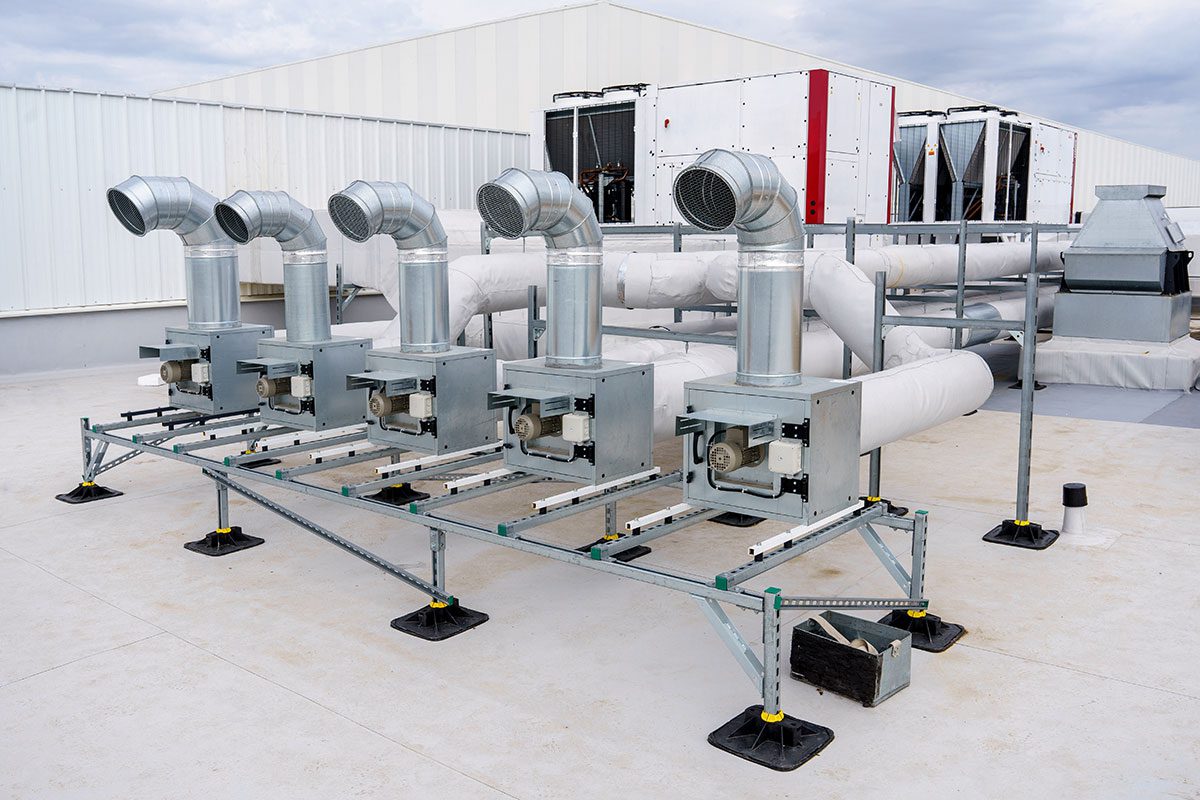Understanding the Components of a Commercial HVAC System
Modern commercial HVAC systems are incredibly complex. They comprise dozens of components working in harmony to keep your business space environment comfortable and healthy.
Let’s break down what’s inside these systems and the roles they play.
Heating Components
Boilers, furnaces, and heat pumps are the main systems that keep commercial spaces warm.
Boilers
Boilers generate heat by warming water. The heated water or steam then circulates throughout the building using pipes and reaches radiators or convectors, which radiate heat into the rooms.
In some systems, hot water is also used to heat air through a coil. This type of heat is often preferred as it is more even and not as dry as forced air systems, keeping the humidity at a preferred level.
Furnaces
Unlike boilers, furnaces don’t use water to transfer heat. They heat air itself, which is then distributed through ducts by fans or blowers.
The heat exchanger is the furnace’s main component. It separates combustion gases from breathable air and is essential for safety and efficiency.
Heat Pumps
Heat pumps are versatile units capable of both heating and cooling. In heating mode, they extract heat from the outside air or ground and transfer it indoors.
You can learn more about heat pumps from our water source heat pump guide.
HVAC Ventilation Components
Ventilation is critical for effective air circulation. This process constantly brings fresh air indoors while stale and polluted air is removed. The main components responsible for ventilation are air handling units, ducts, and vents.
Air Handling Units
AHUs pull in outside air and circulate it through the building. While doing so, they also improve air quality. Components like air filters and coils within the AHU clean and condition the air before bringing it indoors.
Ductwork
Ducts are the transportation highways for air. Through them, fresh air arrives at every corner of the building. To work properly, ducts must be insulated and clean.
Here is our in-depth article about commercial ductwork.
Vents and Grills
These are the endpoints of the duct system, where air enters and exits the rooms. Their design and placement are crucial for ensuring even air distribution without creating drafts or hot spots.
Cooling Components
As temperatures rise, the cooling components of a commercial HVAC system become indispensable. This part will cover chillers, cooling towers, and refrigerants that ensure comfort during the warmer months.
Chillers
Chillers absorb heat from the building’s air through a process of evaporation and condensation using water cooled by refrigerant. Sounds a bit too technical? C
heck our article about chillers that explains it all in simple terms.
Cooling Towers
Cooling towers often work aside chillers, increasing the cooling efficiency of the whole system. They expose water from the system to the outside air, cooling it through evaporation before it returns to the chiller.
Learn more about this highly effective solution from our guide on cooling towers.
Refrigerants
Refrigerants are the substances within the chiller and air conditioning components that carry heat. Their ability to change phase (from liquid to gas and back) at different temperatures and pressures makes the heat transfer process efficient.
Air Quality and Filtration Components
Keeping indoor air clean and fresh is as important as keeping the temperature comfortable. This part delves into filters, humidity control equipment, and air sterilizing solutions.
Filters
Positioned in AHUs or return air ducts, filters capture dust, pollen, and other airborne contaminants. Some filters are even capable of trapping microscopic particles.
And, you guessed it, we have an extensive article about filters if you want to delve deeper into this topic.
Humidifiers and Dehumidifiers
In some cases, it’s important to maintain specific moisture levels, and that’s where humidity control equipment comes into play. Humidifiers add moisture, and dehumidifiers remove it from the air – it’s that simple.
UV Lights
Used in some systems, UV lights sterilize air passing through the AHU, neutralizing bacteria, viruses, and other microorganisms.
Control Components and Thermostats
Controls and thermostats act as the brains of the HVAC system. They regulate temperatures, manage the operation of heating and cooling units, and can even optimize energy use based on real-time data.
Advanced systems link to building automation systems for centralized control and monitoring.
Are All Components of Your Commercial HVAC System Working Properly?
Each commercial HVAC system is unique. Depending on the size and purpose of your system, it may miss some of the components listed above or have others that we did not mention.
Keeping your commercial HVAC system well-maintained is crucial, no matter how small or complicated it is. That’s why you need knowledgeable and experienced engineers to look after your system.
Diversified HVAC is here to help! Contact us if you have any questions regarding commercial HVAC systems.


